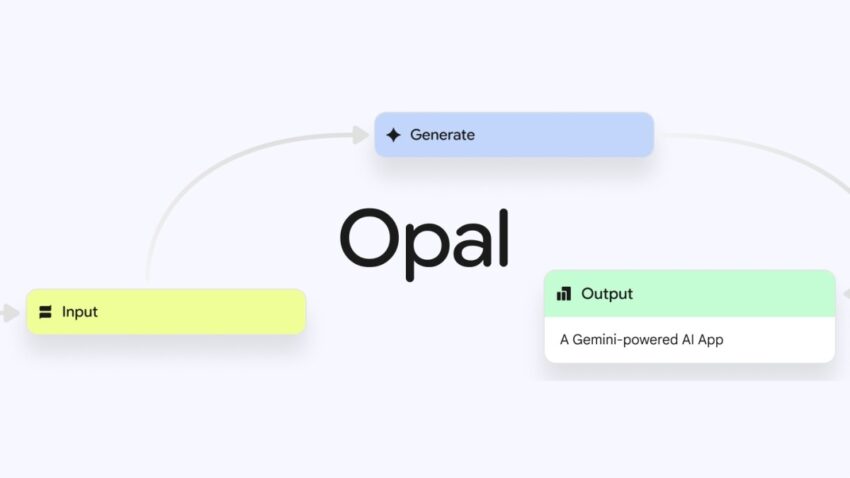
google launches its ai vibe-coding app opal Google has expanded the availability of its innovative AI vibe-coding app, Opal, to 15 additional countries, enhancing its global reach and accessibility.
google launches its ai vibe-coding app opal
Overview of Opal
Opal is a cutting-edge application developed by Google that allows users to create mini web applications using simple text prompts. The app leverages artificial intelligence to interpret user input and generate functional web applications, making coding more accessible to individuals without extensive programming knowledge. This democratization of technology aligns with Google’s broader mission to empower users through intuitive tools.
Key Features of Opal
Opal is designed to simplify the coding process by enabling users to express their ideas in natural language. Some of the standout features include:
- Text-to-App Generation: Users can input a description of the app they envision, and Opal will generate a functional prototype based on that description.
- User-Friendly Interface: The app boasts an intuitive interface that guides users through the app creation process, reducing the learning curve typically associated with coding.
- Integration with Google Services: Opal seamlessly integrates with various Google services, allowing users to incorporate features like Google Maps, Google Drive, and more into their applications.
- Collaboration Tools: Users can collaborate in real-time, making it easier for teams to work together on app development projects.
Expansion to New Markets
The recent launch in 15 new countries marks a significant step in Google’s strategy to broaden the reach of Opal. The countries included in this expansion are:
- Canada
- India
- Japan
- South Korea
- Vietnam
- Indonesia
- Brazil
- Singapore
- Colombia
- El Salvador
- Costa Rica
- Panamá
- Honduras
- Argentina
- Pakistan
This strategic expansion is indicative of Google’s commitment to fostering innovation in diverse markets, particularly in regions with burgeoning tech ecosystems. By making Opal available in these countries, Google aims to tap into the creativity and potential of local developers and entrepreneurs.
Implications for Local Developers
The launch of Opal in these new markets has several implications for local developers and tech enthusiasts:
- Increased Accessibility: With Opal, individuals who may have previously found coding daunting can now create applications without needing to learn complex programming languages.
- Encouragement of Innovation: The app can serve as a catalyst for innovation, enabling users to quickly prototype ideas and bring them to life, which can lead to the development of unique solutions tailored to local needs.
- Empowerment of Small Businesses: Small business owners can leverage Opal to create custom applications that enhance their operations, improve customer engagement, and streamline processes.
Reactions from Stakeholders
The response to Opal’s expansion has been largely positive, with various stakeholders expressing enthusiasm about its potential impact:
Developers and Tech Enthusiasts
Many developers and tech enthusiasts have welcomed the introduction of Opal, viewing it as a valuable tool that can bridge the gap between ideas and execution. Comments from early users highlight the ease of use and the speed at which they can create functional applications. This has led to a surge of interest in learning more about AI and coding, as users experiment with the app’s capabilities.
Educational Institutions
Educational institutions in the newly launched countries are also taking note of Opal. Many see it as an opportunity to enhance their curriculum by incorporating practical coding exercises that utilize AI tools. By introducing students to Opal, educators can foster a more engaging learning environment that encourages creativity and problem-solving.
Government and Policy Makers
Government officials and policymakers have expressed interest in the potential of Opal to stimulate local economies. By empowering individuals to create their own applications, there is a possibility of fostering entrepreneurship and innovation. This aligns with many governments’ goals to promote digital literacy and technological advancement within their populations.
Challenges and Considerations
While the launch of Opal in these new markets presents numerous opportunities, there are also challenges and considerations that must be addressed:
Digital Divide
Despite the app’s user-friendly nature, access to technology and the internet remains a significant barrier in some regions. Ensuring that all potential users can access Opal will be crucial for its success. Google may need to collaborate with local governments and organizations to improve digital infrastructure and access.
Data Privacy and Security
As with any application that collects user data, concerns about privacy and security are paramount. Google will need to ensure that Opal adheres to local regulations regarding data protection and that users feel confident in the security of their information. Transparency about data usage and robust security measures will be essential to build trust among users.
Market Competition
The expansion of Opal also places Google in direct competition with other coding platforms and tools that may already have a foothold in these markets. To maintain its competitive edge, Google will need to continuously innovate and enhance Opal’s features, ensuring that it meets the evolving needs of users.
Future Prospects for Opal
Looking ahead, the future of Opal appears promising. As more users in the newly launched countries begin to explore the app, Google will likely gather valuable feedback that can inform future updates and enhancements. The potential for community-driven development and collaboration could lead to a vibrant ecosystem of applications built on the Opal platform.
Potential Features and Updates
Google has indicated that it plans to introduce additional features to Opal based on user feedback. Some potential updates could include:
- Advanced Customization Options: Allowing users to customize their applications further, enabling more complex functionalities.
- Integration with Third-Party Services: Expanding the range of services that can be integrated into applications created with Opal.
- Enhanced Collaboration Tools: Improving real-time collaboration features to facilitate teamwork among users.
Conclusion
The launch of Google’s AI vibe-coding app Opal in 15 new countries marks a significant milestone in the company’s efforts to democratize technology and empower users. By providing an accessible platform for app development, Opal has the potential to inspire innovation, foster entrepreneurship, and enhance digital literacy across diverse markets. As the app continues to evolve and adapt to user needs, it may well become a cornerstone of the next generation of digital creators.
Source: Original report
Was this helpful?
Last Modified: October 8, 2025 at 10:40 am
1 views















